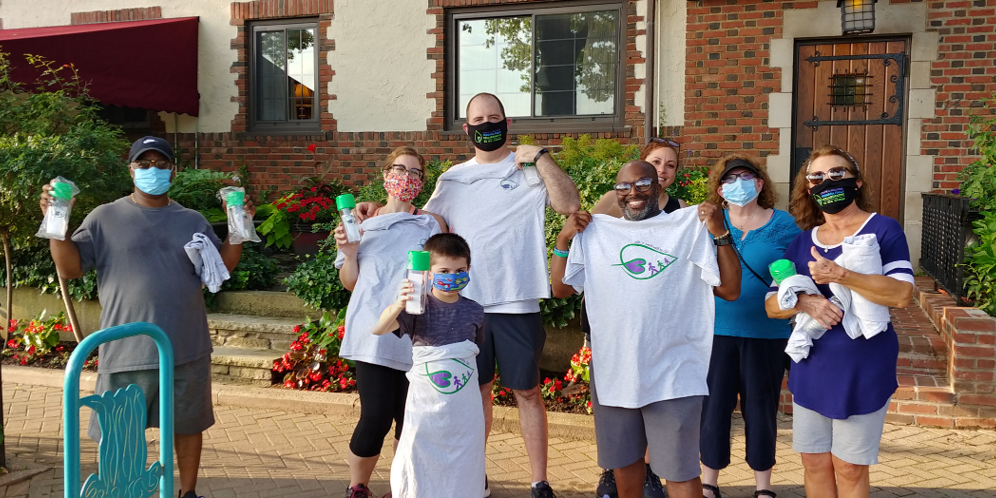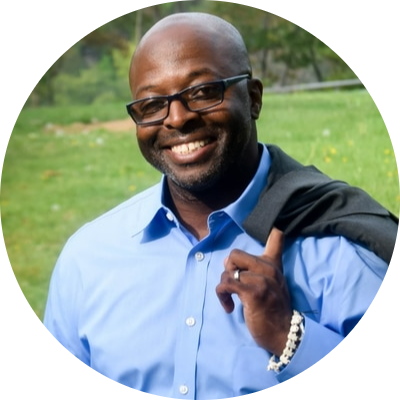Conveners for Health and Equity in Six New York Communities: Community Convener Brian Archie – Create a Healthier Niagara Falls Collaborative

In 2015, the city of Niagara Falls, NY, was selected as one of six grantees to be part of the New York State Health Foundation’s (NYSHealth) Healthy Neighborhoods Initiative (HNI). The Create a Healthier Niagara Falls Collaborative (CHNFC) grew out of this investment—an entirely resident-led community convener. Brian Archie, with his partners on the CHNFC leadership team—Evelyn Harris, Keyona Dunn, and Sarah Obot—has been a committed champion of his community, connecting residents, building trust, advancing equity, and improving conditions for well-being. Healthy Places by Design talked to Brian about his experiences, here are highlights from our conversation.

PB: What was your role in the HNI and at Create a Healthier Niagara Falls Collaborative?
BA: At the beginning of the initiative, we used the term co-chair and change agent for our roles. In my own capacity as an organizer, I now use the term “integrator,” which is our version of executive director for the Collaborative. We still have a shared-leadership model.
What impact did your experience in the HNI have on you as a professional?
I often talk about the evolution of self. Starting back in 2015 I had no clue about community work. It was something that took place outside of my work at the community hospital in Niagara Falls. I was someone just moving along in life, just living day-to-day. Evelyn (Harris) brought me into the fold since we worked together. She asked me straight what I would like to see happen in the community. Nobody had ever posed that question to me. I felt I had a say. I felt I had some power to change things. That was an a-ha moment that helped me increase my connection to my community. Unknowingly, I increased my professional capacity for leadership and team building, too. I’ve been able to transfer skills I didn’t identify as skills that were second nature for me when used within my community. For example, I now speak on behalf of the Collaborative, being as direct and pointed as I need to be to draw people into our activities. I can communicate our goals, instructions, values, and what is going on in the moment. Early on, when we were planning our first "Walk the Falls" event our original coordinator told me, “Brian, you’re the voice.” From there it just took off. Now, when we need a spokesperson, it’s me. I feel grateful now. I’m awakened to what was right in front of me.
What were the greatest challenges as a community convener?
The biggest challenge is identifying change with data points that a funder understands as success. Community work takes time. We have goals and objectives to meet that are not necessarily grandiose. If the work is rushed, important pieces can be missed. Funders need to expect accountability and not be entirely hands-off, and they should expand their sense of what success can look like. Another challenge is the funding itself not being as available or as flexible if it’s not within a particular funders’ budget. If a funder can no longer fund in a particular area, they could connect us with another funder. Money can fix a lot, but not everything. It also takes relationships within the community and relationships with funders.
"Community work takes time."
What are you most proud of as a convener?
I am proud of having a presence in the community, building our capacity, and becoming a trusted organization in Niagara Falls. I can remember when we started meeting with local agencies, we wondered, “Who are these folks?” Their meetings had a bunch of organization heads and no community people. We built on relationships we had and now we can call on any number of folks to get projects moving, share resources, or just ask for—and offer—assistance. Personal relationships and conversations helped us outlast changes in government administrations. I am proud that, year after year, there’s an increase in community gardening and momentum of organizations getting more people to grow their own food. Some share a negative connotation of people in the North End, being “those folks,” who aren’t expected to garden. My grandparents came from Vicksburg, Mississippi. I can’t remember a time when we didn’t have a family garden. It helped to provide for us and many others in the community. To see those not exposed to this now be involved and gardening themselves is very encouraging.
What are the biggest or most lasting impacts of the HNI in your community?
The introduction and conversations around healthy food access have been huge. Community gardening can be done and sustained by anyone. Our “Walk the Falls” event, now in its fifth year running, has created space for the Mile n’ Smile Walking Club that meets pretty much on a weekly basis. Other physical activities such as Zumba, yoga for youth, and biking were uplifted by residents. Being able to partner and share resources with other grantee communities benefitted and enhanced the work. Foundation funding allowed for resident engagement meetings, where social connection was strengthened, and ideas of change were born!
"Being able to partner and share resources with other grantee communities benefitted and enhanced the work."
What is the impact on residents?
Residents and young people have benefitted most from the initiative. Engaging young people gets their parents involved. My little cousin came out to a neighborhood garden workshop and took some seeds back home with him. That year he grew cucumbers, tomatoes, kale, and watermelon. Every two weeks, I was getting a picture, from his mother, of him in his garden. Then he asked me for some Ashwagandha seeds. I had to talk with our plant experts to find out if that was available and safe to plant. They helped make it happen.
Once folks can identify with the messenger, it empowers them to do the same. This is living out specifically in the North End neighborhood, a predominantly African American neighborhood, where people say, “No we don’t do that.” They may say that for something as simple as riding a bike. I purchased a bike about five years ago and have been riding ever since. And the Collaborative secured some e-bikes through partnership with Shared Mobility to extend the program out into the neighborhood. We feel this work is about access and safety, so folks can take advantage of it. Previously, people did not even want to leave their front porch. But now I get calls such as someone asking for a free little library box for their front yard, which is a resident-driven project from a program of the Collaborative. It’s rewarding to see people having their a-ha moments, just like I did.
What is the impact on partners?
As a result of the HNI, our partners no longer see Niagara Falls as just this dead space where you put resources into and don’t see an output. There are many more opportunities to come here. When resources come to this region, they are usually for Buffalo and don’t make it across the bridge to Niagara Falls. Now, folks will make sure resources are shared. Collaboration is key to building and sustaining healthy communities.
What advice would you offer to organizers from other communities?
Be patient. Everybody does not learn at the same pace. We must meet people where they are and give them the opportunity and space to succeed. We need to be OK with everything not taking hold. Our work was about healthy eating, physical activity, and social connectivity. The pandemic just killed people’s chances to connect. Technology provided a way around that barrier. We have to continue to show up authentically. Organizers need to be consistent, not just in messaging, but in how we interact with each other. We try not to be seen as those who are just the mouthpiece of “big government.” We are not pushing anyone else’s agenda.
"We must meet people where they are and give them the opportunity and space to succeed."
What advice would you offer to funders supporting community health equity initiatives?
Visit the communities that you’re funding as often as you can. We had a very different experience than others because our program officer was very deeply engaged with us. The relationship was built out beyond the regular reports due and check-in calls. Funders should make it their business to show up once or twice a year—to participate, not to review. Come out to the communities, see things through their lens, even prior to granting the funds. Before sending that email saying they made it to the second round, make a trip out to the community. This would ground funders in the work and the need from the start.
This blog is one of six in our Conveners for Health and Equity in Six New York Communities blog series. Read the full blog series here.